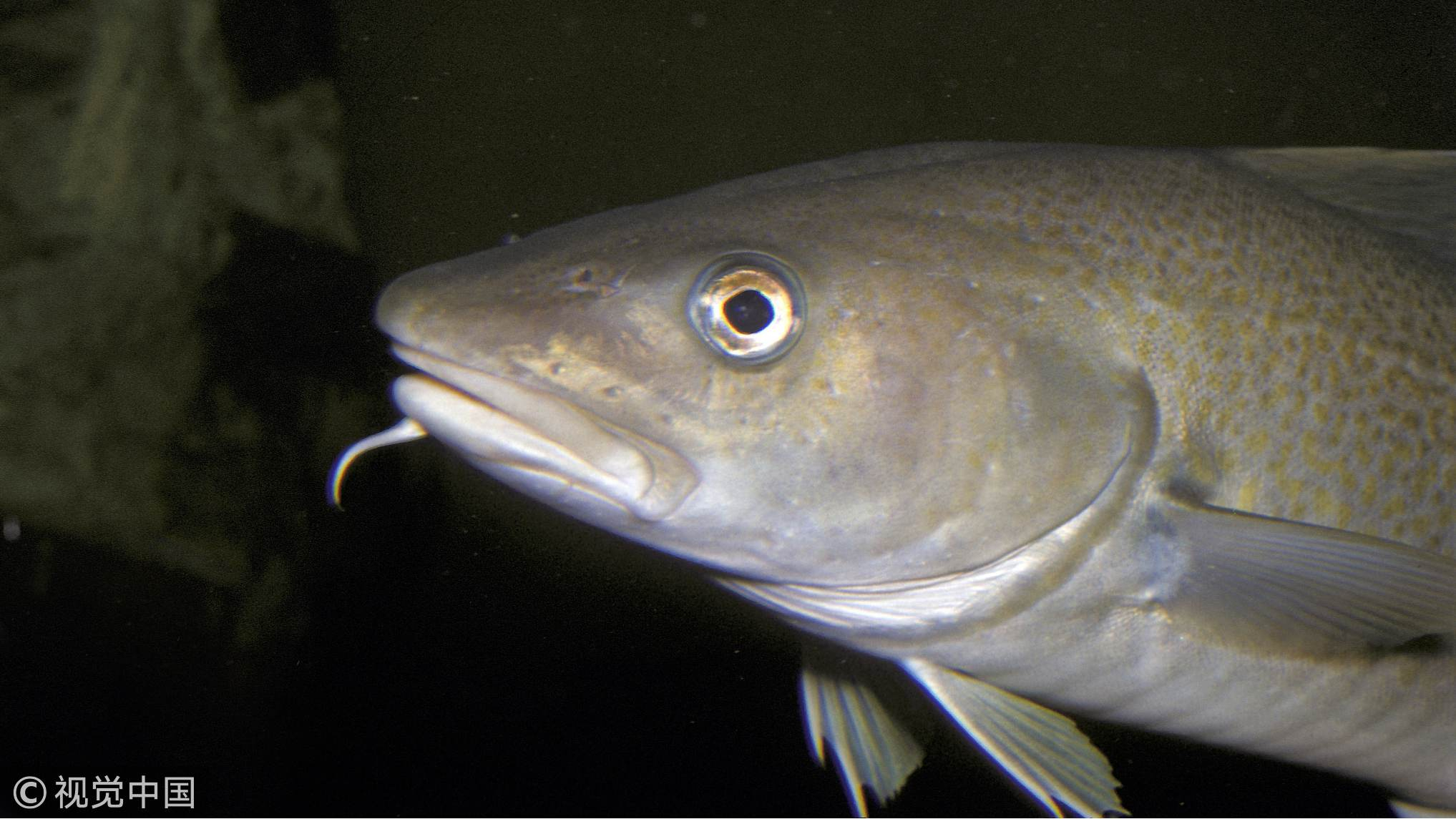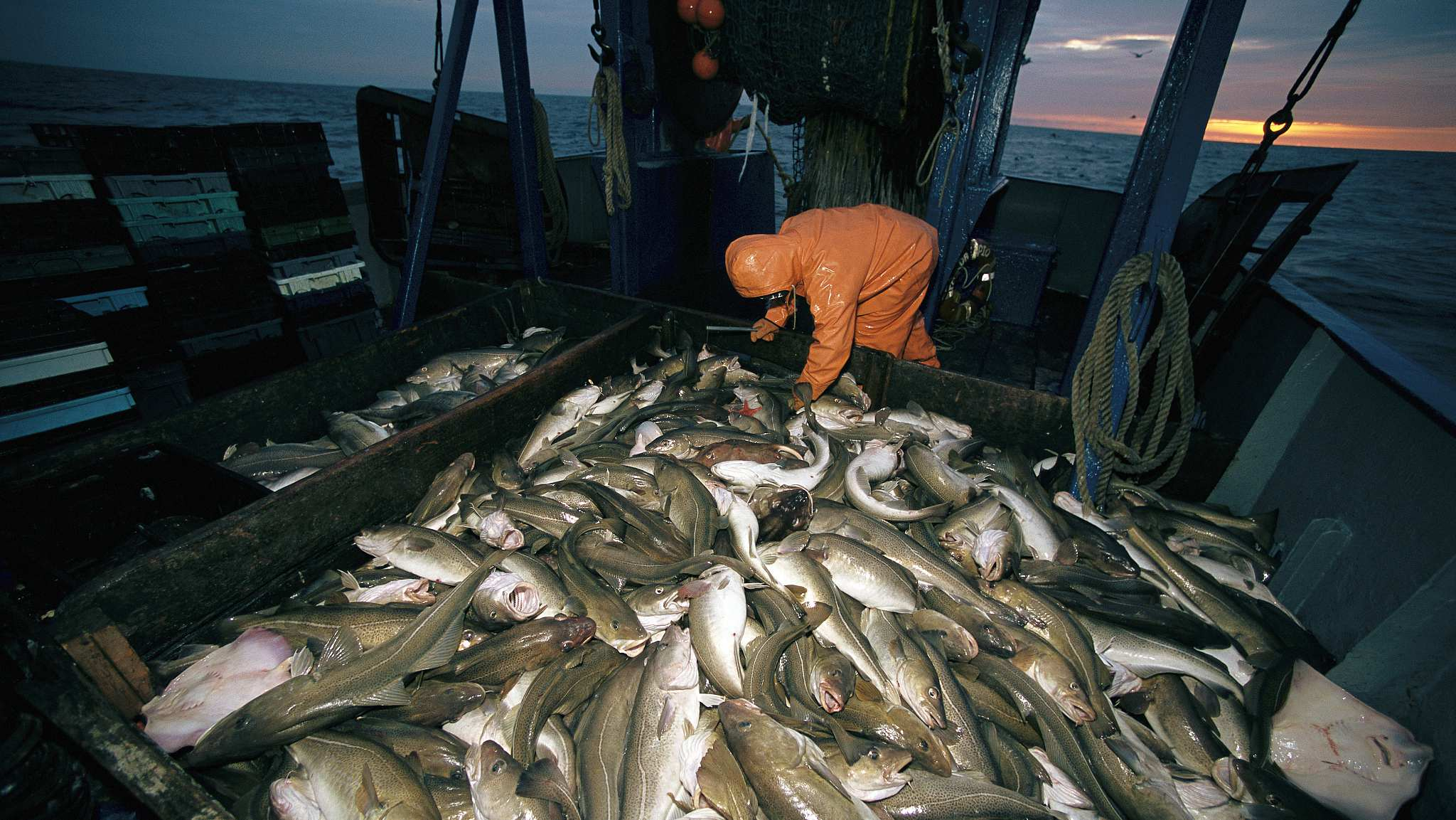
Nature
12:11, 12-Dec-2018
Global warming threatens breeding grounds of cod fish
Updated
11:32, 15-Dec-2018
By Zhao Ying

Rapid climate change in the Northeast Atlantic and the Arctic is posing a threat to some of the world's largest fish populations, according to a new study.
European scientists have found that increasing CO2 emissions will deteriorate the suitability of current breeding grounds for both the Atlantic cod and the polar cod.
The polar cod prefers to spawn in cold water between 0℃ and 1.5℃, similar to their relative the Atlantic cod. As more CO2 dissolves in the ocean, the water becomes more acidic, making it hard for the fish to breed.

Atlantic Cod (Gadus morhua). /VCG Photo
Atlantic Cod (Gadus morhua). /VCG Photo
Researchers found that the death or malformation of codfish eggs would occur if the temperate rises in small increments, and the embryos won't survive at a pH level of 7.7.
They concluded that the chances of survival for the offspring of codfish species will be rather slim if efforts to limit the temperature increase to 1.5°C, in line with the Paris Climate Agreement, fall through.
Apart from that, if the ocean water continues to get warmer and more acidic, both the Atlantic cod and the polar cod might be forced to swim further north in search of more suitable habitats. Their population will sharply decrease.
Scientists suggest that the Atlantic cod in the Northeast Atlantic might shift into the Arctic.

A fisherman cleans a haul of Atlantic cods. /VCG Photo
A fisherman cleans a haul of Atlantic cods. /VCG Photo
Given that codfish is one of the favorite food of Arctic seals and seabirds, their involuntary migration could also force other wildlife to follow suit. It will also severely influence the fishing industry along the coasts of Iceland and Norway.
Every year, the Atlantic cod in Norway alone can bring a revenue of 800 million U.S. dollars.
One of the main researchers of the study Daniela Storch says, "Achieving the climate goals of 1.5°C can prevent the worst, maintaining important spawning areas and minimizing the risks of both species."

SITEMAP
Copyright © 2018 CGTN. Beijing ICP prepared NO.16065310-3
Copyright © 2018 CGTN. Beijing ICP prepared NO.16065310-3